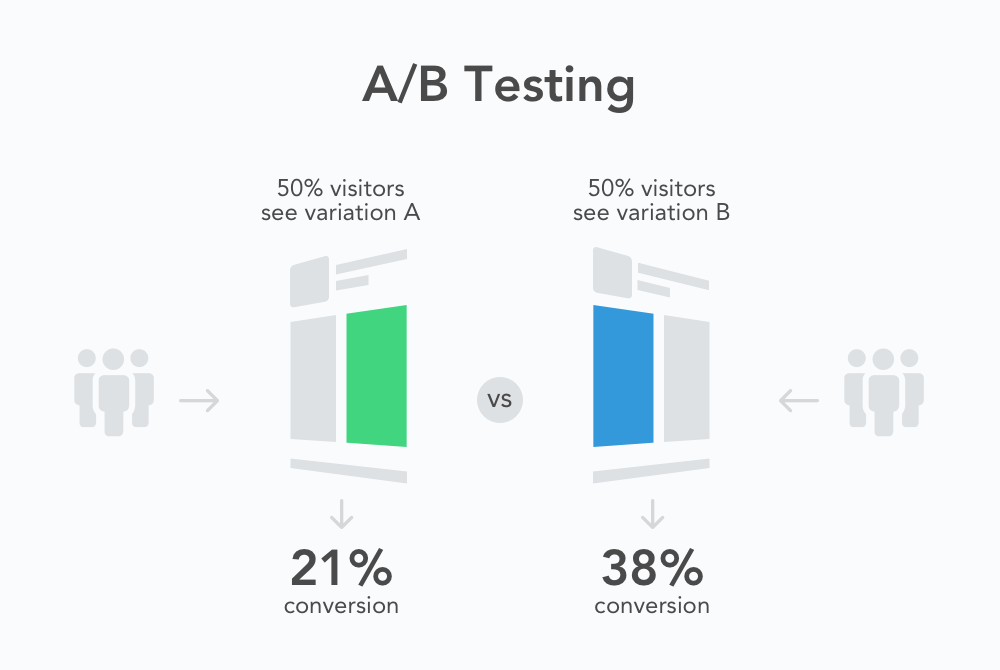Each page on your higher ed website has a job to do. I think we can also all agree that they can always improve. Here are six ways to accomplish that and get better conversion results.
1) Know what you want your site to do.
Do you know what your website’s goals are? This seems like a pretty obvious question but many institutions have not done the hard work to carefully define their site’s objectives. Many institutions too easily slip into the old-school thinking that the website is simply a brochure for their college, and don’t carefully work out their marketing objectives. The reality is that your website is your most critical public facing communications tool that must serve multiple roles and deliver multiple outcomes from multiple types of visitors. Your website forms the foundation of your relationship with all of those visitors, be they prospective students, alumni or staff. So if you have not carefully defined your goals, take some time upfront before you launch into trying to improve page or conversion performance. It will save you tons of time and give you a much more valuable end result.
2) Get feedback on the site you have.
It always surprises me how little time webmasters and web marketers spend gathering feedback on their own websites. There are really great resources sitting in offices all around you on campus who can provide really helpful insight into the effectiveness of your website. Talk to marketing staff, admissions counsellors, departmental chairs, international recruiters. Step into your students’ shoes and ask them what problems they run into to get what they want, to download stuff, or to register in a survey or free lunch for feedback session. Spend some quality time talking with your users and you will learn a lot. Once you have gathered this qualitative feedback, then do a technical audit vs your main competitors and dig into the numbers. Particularly focus on your visitor acquisition channels to boost the performance of your high traffic an high value conversion events. Google analytics is your friend so be sure to take advantage of funnel flow and visitor page maps. And if you have a bit of budget tucked away somewhere for a rainy day your might use it to try out heat maps. They are very insightful into your visitor’s reactions to your pages at a very instinctive, primal level.
3) Know when, and what to ask, to get what you want.
Every page on your site should have an objective, (or two), (but not seven), so keep it simple and focus on your best value proposition, page by page. Conversion events like request info forms, downloads, videos, call to action buttons need to be driven by your related content. For example don’t ask for too much information; that’s a classic conversion killer. If the conversion event is an info package, ask for a name and email address. If you ask for a phone number and home address you may have gone too far and significantly reduced your conversion rate. Keep the relative value of the conversion equal to the info required to get it. Gary Vaynerchuk , of Vayner Media has a great approach to this in his book on effective social media, summed up as, “give, give, give, ask”. Give people lots of relevant, high value information, and then and only then, can you ask them for something back. Think about every page, as a landing page, getting your links, calls to action and forms correct and limiting visitor leakage by minimizing the number of possible exit links a visitor is exposed to.
4) Track it!
As they say if you can’t measure it you can’t manage it. If “it” is a conversion, of course you need to set it up in Google analytics as a goal, with a goal value, and possibly with a goal funnel. Be sure to always add goal dollar value. Even though it is an arbitrary number that you assign, based on your knowledge of your business, it is the best way to measure impact of your goals. Total conversions numbers, % increases etc are all very nice but what you want here is to see real impact on your business and dollars are the best way to do that. If you are new to google analytics then you should also learn about how to tag other kinds of events with the Google URL builder so that you can track events outside of your normal page flow and bring their results into sight within Google Analytics.
5) Test it!

The statistics are very clear that if you adopt a testing mentality and conduct testing on your pages that your results will improve. Conversion improvements will come in two forms. Firstly, you will get a lift in conversions on a page that you have improved, having applied some logical testing hypothesis to it. I believe you will get an even bigger lift from the deeper insights that you will gain about your visitor behavior and about what works for your school. A/B and Multivariate testing will teach you things about how to better connect to your audience that you can get in no other way. In my experience, A/B testing was a huge eye opener; I have learned about what works, and what does not work in specific situations but more importantly I have learned to be very humble about my opinions on what works. Testing will knock you down a few pegs and then build you up again with new insight and skills that you can get no other way.
If you would like to test your own conversion skills go to this link and test yourself to see just how good you really are in judging what improves conversion. Test your conversion skills at http://www.conversionskills.com/. Then go back to your website and apply what you’ve learned.
6) Say Thanks
It seems a bit redundant to point out to say thanks but so many websites do this badly or not at all. A thank you page is a really critical piece for your analytics, as this page view is what is tracked to indicate a conversion. But equally or more important is to take the opportunity to further the relationship that you have begun to build with this visitor with a simple thank you. They also buffer the visitor against “buyer’s remorse” about revealing their interest in your programs to your admissions department. Thank you pages are also excellent opportunities to give the visitor more value i.e. another link or download a pdf, that takes them further down the path towards registration.
What are your favorite tactics and tips to improve your page conversion rates?






